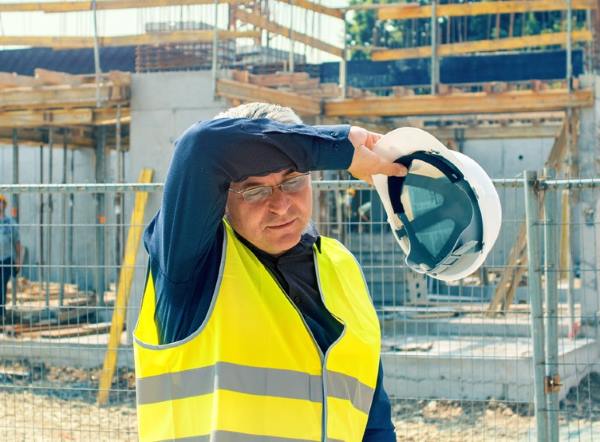Acclimatization is a vital safety measure
In many parts of Texas, temperatures routinely reach triple digits during June, July and August. Acclimatization is one of the most important steps employers can take to protect the health and safety of their employees. New hires and employees unaccustomed to working in the heat are especially at risk, but all employees should be given time to adjust to hotter conditions. Acclimatization benefits the body in numerous ways, including increased sweating efficiency, stabilization of circulation, increased blood flow, and enabling individuals to work with a lower core temperature and heart rate. The process can take up to three weeks, but the first five days are the most critical.
As temperatures rise, employers should create an acclimatization schedule. For new employees, schedule no more than 20% exposure on the first day, then increase that exposure by 20% per day. Experienced employees should have no more than 50% exposure on day one, with their exposure increasing by 10% each day over the next five days.
According to the U.S. Bureau of Labor Statistics, there were 43 heat-related deaths among U.S. employees in 2022 (189KB PDF), which is over a 19% increase from 2021. Thousands of heat-related illnesses and injuries are reported each year, and nearly all of the fatalities occurred during the summer months.
Prepare employees with summer safety tips
Training is an essential part of protecting your employees. If you have employees who work outdoors or in hot indoor environments, provide them with these safety tips.
- Drink about 8 ounces of water every 15-20 minutes, regardless of thirst. That goes for nighttime work as well.
- Understand how the heat index affects your body.
- Rest in the shade for at least five minutes when you need to cool down.
- Wear a hat and light-colored clothing.
- Apply wet towels or headbands to cool off.
- Watch for heat stress symptoms in co-workers, and learn how to treat them.
- Ask your doctor if any of your medications could make you more vulnerable to heat-related illness. Also, be aware of any personal risk factors.
By training your employees and allowing them to acclimate to the heat, you’ll help protect them from the risks associated with summertime work in Texas. Find more information on keeping employees safe on the job on our Safety Best Practices page.
